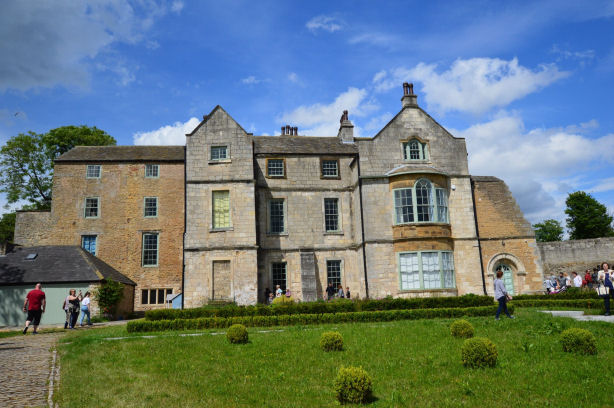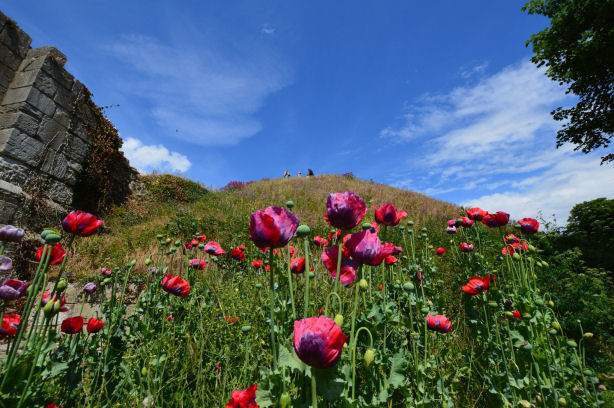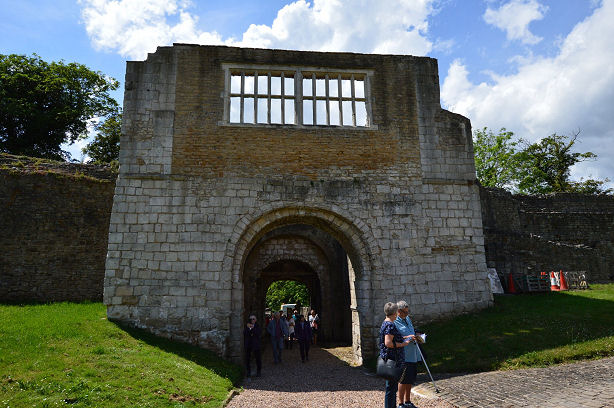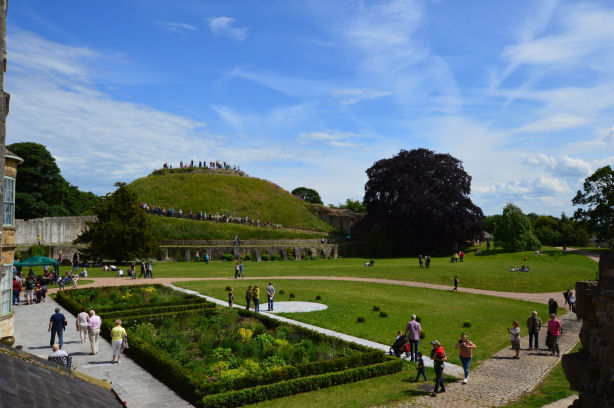Tickhill Castle
Tickhill Castle has had an eventful and tumultuous history. It began life as an eleventh century motte and bailey earthwork which was known as Blythe Castle. It was constructed by the Norman magnate Roger de Busli, who is mentioned as a major landholder in the Domesday Survey of 1086.

Following a siege which took place in 1102 Robert Bloet added a stone curtain wall to the rampart around the bailey. From 1151 to 1153, the castle was owned by Ranulf de Gernon, Earl of Chester. Between 1180 and 1192 King Henry II and his successors built an 11-sided stone keep on top of the motte. A stone bridge and a chapel were constructed by Henry II's wife, Eleanor of Aquitaine.

It was held for their youngest son Prince John against his elder brother King Richard the Lionheart, who was captured and imprisoned during his return journey from the Third Crusade. Richard I did not trust John to remain loyal while he took part in the Third Crusade. His fears proved to be well founded after John seized the kingdom from Richard's regent, William Longchamp in 1191. Along with Windsor Castle, Tickhill was one of John's main strongholds to protect against a suspected invasion by Philip II of France.

Tickhill and Nottingham became John's last strongholds under the command of Robert de la Mare, it was besieged by Hugh de Puiset in 1194, its defenders held out until they heard news of the return of King Richard to England. Two knights were dispatched to discover if the rumour was true, on finding it was, the knights offered to restore the castle to Richard. The king, however, refused, stating he would only accept an unconditional surrender, which the knights negotiated upon their return, surrendering the castle to Hugh de Puiset in exchange for the defenders' lives. In Sir Walter Scott's classic novel 'Ivanhoe' is a graphic story of how Richard I stormed Torquilstone Castle, it likely that it was Tickhill Castle which Scott had in mind.
In 1321, the castle was besieged for a second time by Thomas, Earl of Lancaster during a rebellion against his cousin, King Edward II. In 1372, Edward III granted to the castle to his third son, John of Gaunt, Duke of Lancaster. It remains the property of the Duchy of Lancaster to the present day.

During the Civil War the castle remained loyal to the crown, it was surrenderd to the Earl of Manchester in 1644. its importance as a local centre of resistance led to its 'slighting' by Parliament after the defeat of the royalist forces there in 1648. After the Civil War slighting, the Hansby family built a large seventeenth century house, which may incorporate parts of the old hall.
Today Tickhill castle remains an impressive ruin, retaining its Norman gatehouse, built in 1129-1130, the foundations of the 11-sided keep on a mound 75 feet (23 metres) high.
Images courtesy of Paul Johnson, Image Copyright -Paul Johnson 2019.
